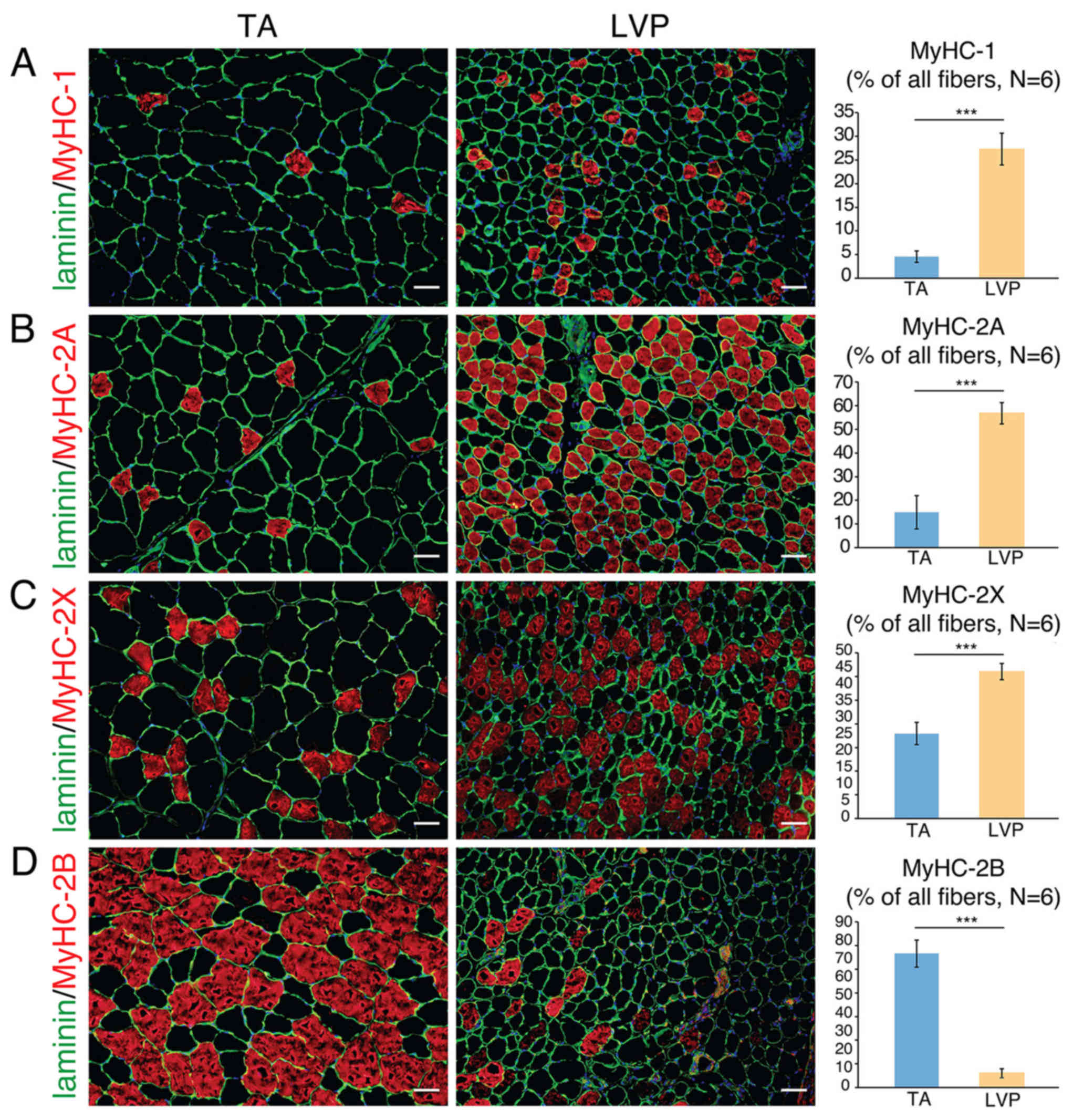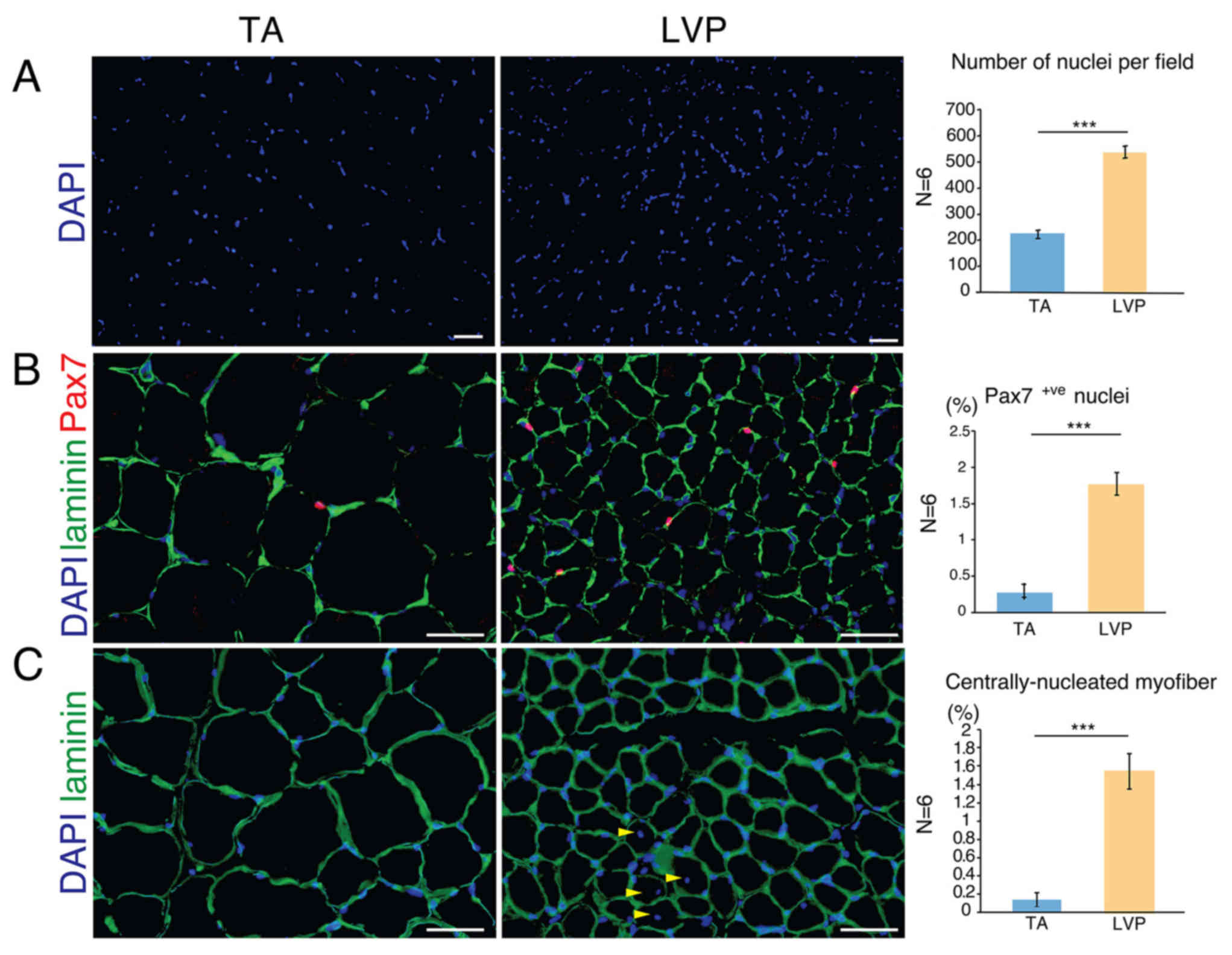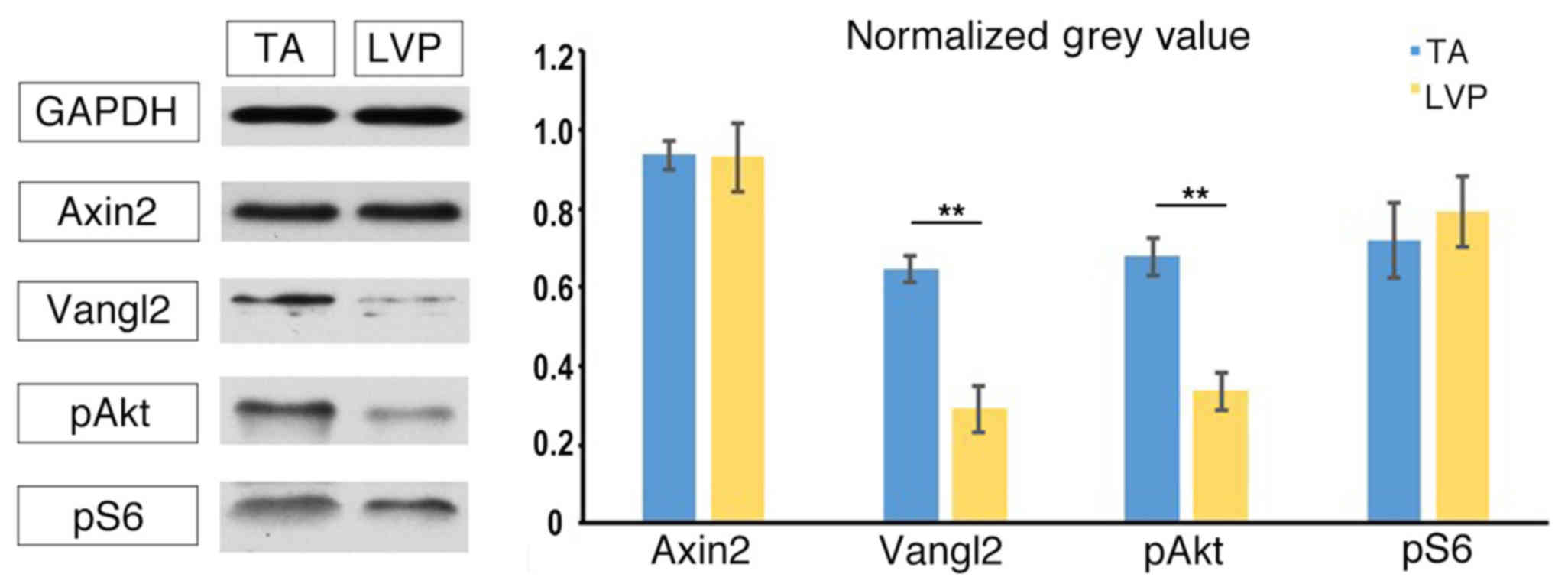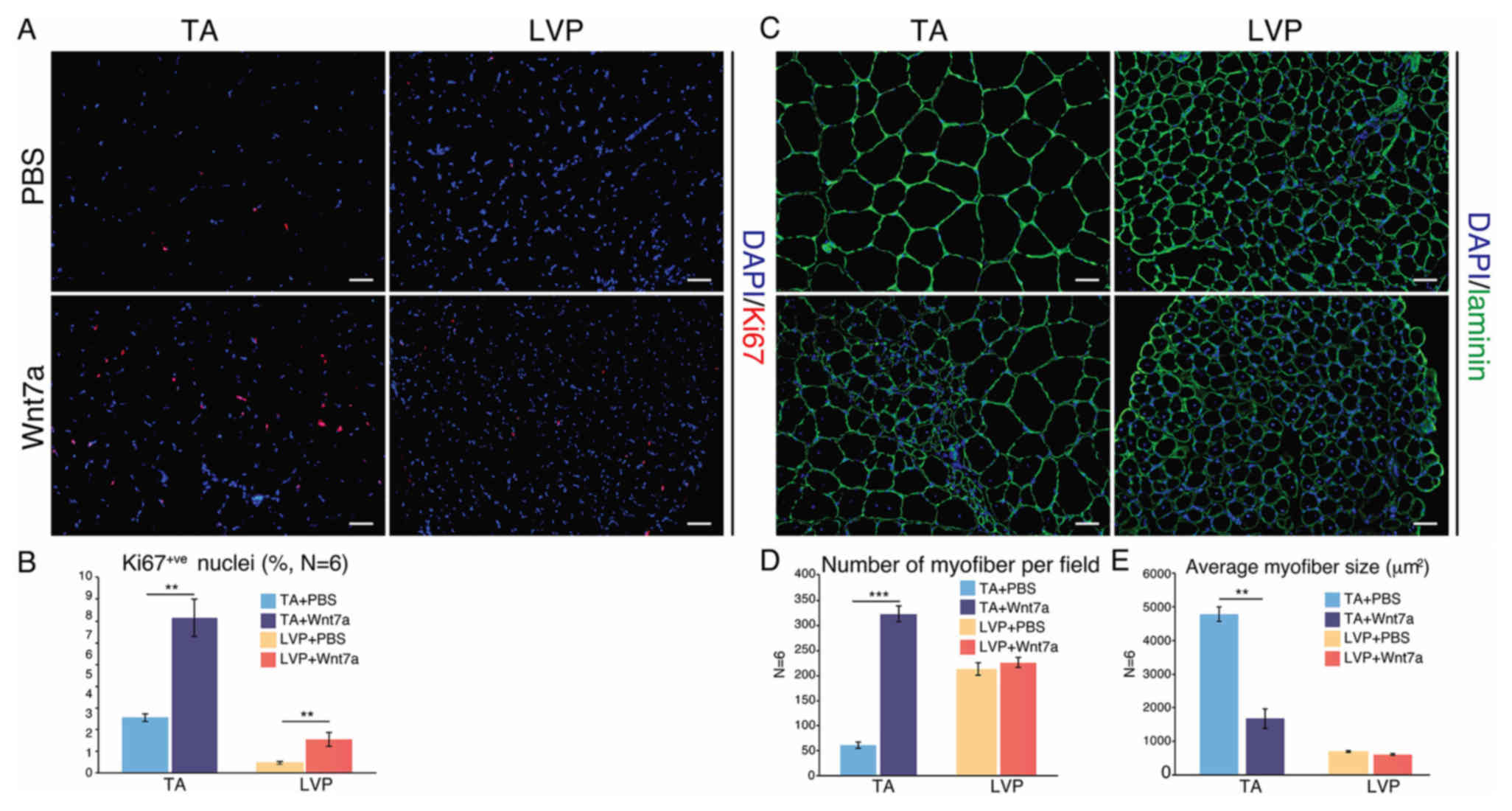|
1
|
Randolph ME and Pavlath GK: A muscle stem
cell for every muscle: Variability of satellite cell biology among
different muscle groups. Front Aging Neurosci. 7:1902015.
View Article : Google Scholar : PubMed/NCBI
|
|
2
|
Sambasivan R, Kuratani S and Tajbakhsh S:
An eye on the head: The development and evolution of craniofacial
muscles. Development. 138:2401–2415. 2011. View Article : Google Scholar : PubMed/NCBI
|
|
3
|
Diogo R, Kelly RG, Christiaen L, Levine M,
Ziermann JM, Molnar JL, Noden DM and Tzahor E: A new heart for a
new head in vertebrate cardiopharyngeal evolution. Nature.
520:466–473. 2015. View Article : Google Scholar : PubMed/NCBI
|
|
4
|
Kelly RG: Core issues in craniofacial
myogenesis. Exp Cell Res. 316:3034–3041. 2010. View Article : Google Scholar : PubMed/NCBI
|
|
5
|
Michailovici I, Eigler T and Tzahor E:
Craniofacial muscle development. Curr Top Dev Biol. 115:3–30. 2015.
View Article : Google Scholar : PubMed/NCBI
|
|
6
|
Shih HP, Gross MK and Kioussi C: Cranial
muscle defects of Pitx2 mutants result from specification defects
in the first branchial arch. Proc Natl Acad Sci USA. 104:pp.
5907–5912. 2007; View Article : Google Scholar : PubMed/NCBI
|
|
7
|
Grifone R and Kelly RG: Heartening news
for head muscle development. Trends Genet. 23:365–369. 2007.
View Article : Google Scholar : PubMed/NCBI
|
|
8
|
Tzahor E and Evans SM: Pharyngeal mesoderm
development during embryogenesis: Implications for both heart and
head myogenesis. Cardiovasc Res. 91:196–202. 2011. View Article : Google Scholar : PubMed/NCBI
|
|
9
|
Pavlath GK, Thaloor D, Rando TA, Cheong M,
English AW and Zheng B: Heterogeneity among muscle precursor cells
in adult skeletal muscles with differing regenerative capacities.
Dev Dyn. 212:495–508. 1998. View Article : Google Scholar : PubMed/NCBI
|
|
10
|
von Maltzahn J, Bentzinger CF and Rudnicki
MA: Wnt7a-Fzd7 signalling directly activates the Akt/mTOR anabolic
growth pathway in skeletal muscle. Nat Cell Biol. 14:186–191. 2012.
View Article : Google Scholar
|
|
11
|
Stuelsatz P, Shearer A, Li Y, Muir LA,
Ieronimakis N, Shen QW, Kirillova I and Yablonka-Reuveni Z:
Extraocular muscle satellite cells are high performance myo-engines
retaining efficient regenerative capacity in dystrophin deficiency.
Dev Biol. 397:31–44. 2015. View Article : Google Scholar : PubMed/NCBI
|
|
12
|
Fisher DM and Sommerlad BC: Cleft lip,
cleft palate, and velopharyngeal insufficiency. Plast Reconstr
Surg. 128:342e–360e. 2011. View Article : Google Scholar : PubMed/NCBI
|
|
13
|
Cohen SR, Chen L, Trotman CA and Burdi AR:
Soft-palate myogenesis: A developmental field paradigm. Cleft
Palate Craniofac J. 30:441–446. 1993. View Article : Google Scholar : PubMed/NCBI
|
|
14
|
Koch KH, Grzonka MA and Koch J: The
pathology of the velopharyngeal musculature in cleft palates. Ann
Anat. 181:123–136. 1999. View Article : Google Scholar : PubMed/NCBI
|
|
15
|
Monroy PL Carvajal, Grefte S,
Kuijpers-Jagtman AM, Wagener FA and Von den Hoff JW: Strategies to
improve regeneration of the soft palate muscles after cleft palate
repair. Tissue Eng Part B Rev. 18:468–477. 2012. View Article : Google Scholar : PubMed/NCBI
|
|
16
|
Iwata J, Suzuki A, Yokota T, Ho TV,
Pelikan R, Urata M, Sanchez-Lara PA and Chai Y: TGFβ regulates
epithelial-mesenchymal interactions through WNT signaling activity
to control muscle development in the soft palate. Development.
141:909–917. 2014. View Article : Google Scholar : PubMed/NCBI
|
|
17
|
Crockett DJ and Goudy SL: Update on
surgery for velopharyngeal dysfunction. Curr Opin Otolaryngol Head
Neck Surg. 22:267–275. 2014. View Article : Google Scholar : PubMed/NCBI
|
|
18
|
Chakravarthy MV, Bradley SD and Frank WB:
IGF-1 restores satellite cell proliferation potential in
immobilized old skeletal muscle. J Appl Physiol (1985).
89:1365–1379. 2000.PubMed/NCBI
|
|
19
|
Márquez-Miranda V, Abrigo J, Rivera JC,
Araya-Durán I, Aravena J, Simon F, Pacheco N, González-Nilo FD and
Cabello-Verrugio C: The complex of PAMAM-OH dendrimer with
Angiotensin (1–7) prevented the disuse-induced skeletal muscle
atrophy in mice. Int J Nanomedicine. 12:1985–1999. 2017. View Article : Google Scholar : PubMed/NCBI
|
|
20
|
White RB, Bierinx AS, Gnocchi VF and
Zammit PS: Dynamics of muscle fibre growth during postnatal mouse
development. BMC Dev Biol. 10:212010. View Article : Google Scholar : PubMed/NCBI
|
|
21
|
Monroy PL Carvajal, Grefte S,
Kuijpers-Jagtman AM, Helmich MP, Ulrich DJ, Von den Hoff JW and
Wagener FA: A rat model for muscle regeneration in the soft palate.
PLoS One. 8:e591932013. View Article : Google Scholar : PubMed/NCBI
|
|
22
|
Meng H, Janssen PM, Grange RW, Yang L,
Beggs AH, Swanson LC, Cossette SA, Frase A, Childers MK, Granzier
H, et al: Tissue triage and freezing for models of skeletal muscle
disease. J Vis Exp. 2014. View
Article : Google Scholar
|
|
23
|
Chang NC and Rudnicki MA: Satellite cells:
The architects of skeletal muscle. Curr Top Dev Biol. 107:161–181.
2014. View Article : Google Scholar : PubMed/NCBI
|
|
24
|
Cadot B, Gache V and Gomes ER: Moving and
positioning the nucleus in skeletal muscle-one step at a time.
Nucleus. 6:373–381. 2015. View Article : Google Scholar : PubMed/NCBI
|
|
25
|
Dumont NA, Bentzinger CF, Sincennes MC and
Rudnicki MA: Satellite cells and skeletal muscle regeneration.
Compr Physiol. 5:1027–1059. 2015. View Article : Google Scholar : PubMed/NCBI
|
|
26
|
Huraskin D, Eiber N, Reichel M, Zidek LM,
Kravic B, Bernkopf D, von Maltzahn J, Behrens J and
Hashemolhosseini S: Wnt/β-catenin signaling via Axin2 is required
for myogenesis and, together with YAP/Taz and Tead1, active in
IIa/IIx muscle fibers. Development. 143:3128–3142. 2016. View Article : Google Scholar : PubMed/NCBI
|
|
27
|
Le Grand F, Jones AE, Seale V, Scimè A and
Rudnicki MA: Wnt7a activates the planar cell polarity pathway to
drive the symmetric expansion of satellite stem cells. Cell Stem
Cell. 4:535–547. 2009. View Article : Google Scholar : PubMed/NCBI
|
|
28
|
von Maltzahn J, Renaud JM, Parise G and
Rudnicki MA: Wnt7a treatment ameliorates muscular dystrophy. Proc
Natl Acad Sci USA. 109:pp. 20614–20619. 2012; View Article : Google Scholar : PubMed/NCBI
|
|
29
|
Schiaffino S and Reggiani C: Fiber types
in mammalian skeletal muscles. Physiol Rev. 91:1447–1531. 2011.
View Article : Google Scholar : PubMed/NCBI
|
|
30
|
Perry JL, Kuehn DP and Sutton BP:
Morphology of the levator veli palatini muscle using magnetic
resonance imaging. Cleft Palate Craniofac J. 50:64–75. 2013.
View Article : Google Scholar : PubMed/NCBI
|
|
31
|
Lindman R, Paulin G and Stål PS:
Morphological Characterization of the levator veli palatini muscle
in children born with cleft palates. Cleft Palate Craniofac J.
38:438–448. 2001. View Article : Google Scholar : PubMed/NCBI
|
|
32
|
Talbot J and Maves L: Skeletal muscle
fiber type: Using insights from muscle developmental biology to
dissect targets for susceptibility and resistance to muscle
disease. Wiley Interdiscip Rev Dev Biol. 5:518–534. 2016.
View Article : Google Scholar : PubMed/NCBI
|
|
33
|
Yin H, Price F and Rudnicki MA: Satellite
cells and the muscle stem cell niche. Physiol Rev. 93:23–67. 2013.
View Article : Google Scholar : PubMed/NCBI
|
|
34
|
Randolph ME, Phillips BL, Choo HJ, Vest
KE, Vera Y and Pavlath GK: Pharyngeal satellite cells undergo
myogenesis under basal conditions and are required for pharyngeal
muscle maintenance. Stem Cells. 33:3581–3595. 2015. View Article : Google Scholar : PubMed/NCBI
|
|
35
|
Keefe AC, Lawson JA, Flygare SD, Fox ZD,
Colasanto MP, Mathew SJ, Yandell M and Kardon G: Muscle stem cells
contribute to myofibres in sedentary adult mice. Nat Commun.
6:70872015. View Article : Google Scholar : PubMed/NCBI
|
|
36
|
Tamaki T, Akatsuka A, Yorshimura S, Roy RR
and Edgerton VR: New fiber formation in the interstitial spacs of
rat skeletal muscle during postnatal growth. J Histochem Cytochem.
50:1097–1111. 2002. View Article : Google Scholar : PubMed/NCBI
|













